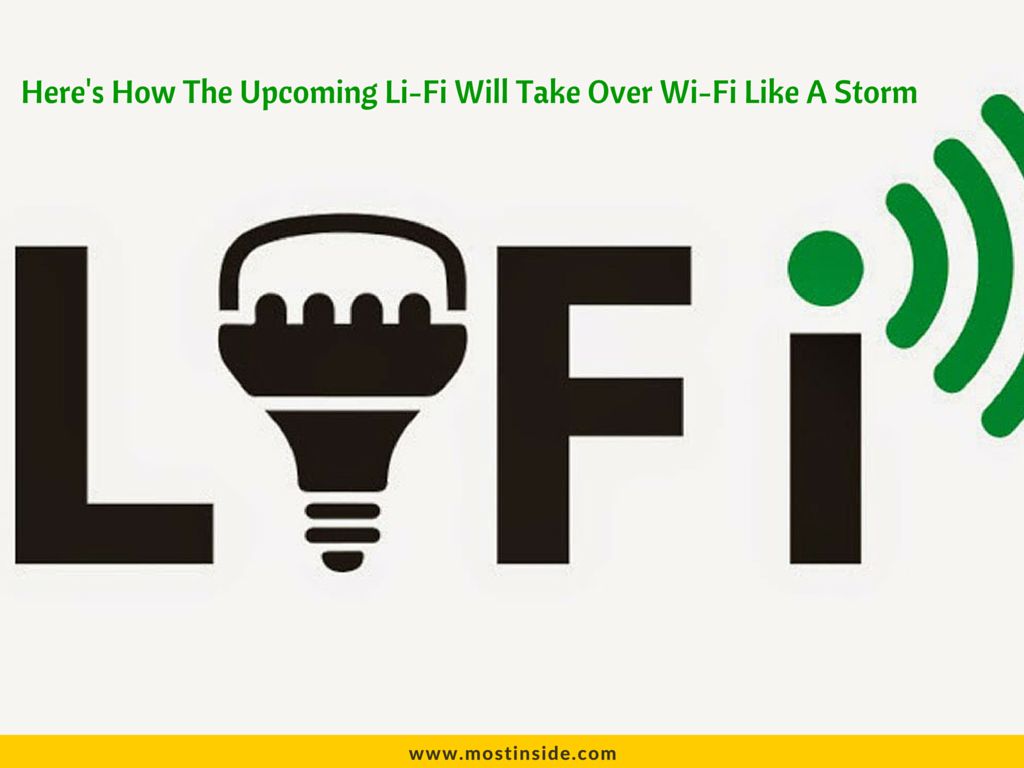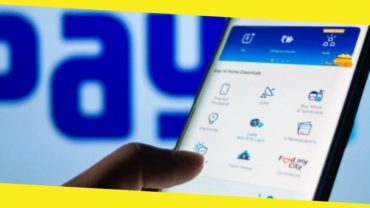Here’s How The Upcoming Li-Fi Will Take Over Wi-Fi Like A Storm
This post was last updated on July 4th, 2016

As the technology has shown rapid development in the last few decades, consistent internet connection has become a primary need just like other utilities like electricity, water, telephone and gas connections. While a few years ago, huge number of people were dependent upon the LAN connections for seamless internet services but the world has now adopted the Wi-Fi technology, where you can simply log on to your PC with a wireless internet connection. The technology is gradually giving us increased freedom to have access to internet while being on the move.
But here’s another revolutionary introduction in the field of Information Technology in the form of Li-Fi (Light Fidelity) that is said to vanish the use of Wi-Fi because unlike the latter, Li-Fi is around 100 times faster. The development of this technology initiated at Tallinn in Estonia has been announced by a team of researchers working at Velmenni, a New Delhi listed company. Li-Fi is basically an optical networking technology that transmits data using light emitting diodes (LEDs).
This Optical Wireless Communication (OWC) technology is similar to Wi-Fi except that it is super fast, completely secure and uses LED light-bulbs. The company has stated that their Li-Fi in the form of Velmenni Jugnu will definitely be a breakthrough in the field of Visible Light Communication (VLC) that will make Wi-Fi a technology of the past.
With nomenclature Li-Fi, it was Professor Harald Haas from the University of Edinburgh who invented this technology in the year 2011. In his TED video regarding the introduction and need for Li-Fi technology, Prof. Haas states some of the noteworthy points that has actually prompted the development of this technology. Here are a few of his conclusions on the development of Li-Fi technology:
- With more than 5 billion mobile phones being used worldwide, we actually transmit more than 600 TB of data every month and the consumption is further rising owing to surge in use for personal and business purposes.
- One of the major issues of using Wi-Fi is the capacity as it uses electromagnetic waves, which are scarce and expensive too. Moreover, it’s access is limited to a stipulated range, which again contradicts to the rising demand for consistent internet access.
- Second issue is efficiency because with more than 1.4 million cellular base stations, they consume a lot of energy. The humongous energy consumption is in fact, not utilised in transmitting the electromagnetic waves but used in cooling the cellular base stations. Thereby the efficiency of such a base station reduces down to meagre 5 percent.
- Another rising issue in using Wi-Fi is its availability. You may often find yourselves in situations where someone asks you to switch off your Wi-Fi to improve the internet access on their devices.
- Security is yet another determinant. Since these radio waves of Wi-Fi penetrate through walls, they can be intercepted by anyone who has bad intentions.
- On the other hand, we have more than 14 billion of light bulbs, where light is a part of electromagnetic spectrum. The other constituents of electromagnetic spectrum include gamma rays, X-rays, ultraviolet light and infra-red, all of which are hazardous for our health. And in fact, Wi-Fi has been said to adversely affect functioning of our brain apart from having the above limitations. So what has emerged as safe to use as per Prof. Haas is the light that is abundantly scattered and has the potential to be used for wireless communications.
- After series of feasibility researches, he says that the capacity, availability, efficiency and security issues get resolved since we already have the infrastructure ready in the form of light bulbs. The only thing to be checked is that we remove the inefficient incandescent light bulbs and affix the LED light-bulbs. The LED works as a semi conductor and is an electronic device, whose intensity can be modulated and can be even switched off at high speeds.
- The Li-Fi technology has been developed to transmit thousands of data streams in parallel at higher speeds efficiently. This technology that allows to transit data via light has been termed as SIM OFDM.
- For demonstration purposes, Prof. Haas showed a visible light demonstrator fit in an LED light bulb that comprise of a little hole, which has a receiver. When light goes through the hole, the receiver converts the little, subtle changes in the amplitude into an electric signal. The signal then gets converted into high speed data stream.
- So when you switch on the light or desk lamp, you can read your books while the light also helps in downloading high definition videos for you.
- The human eye won’t be able to detect the whole process of conversion and if you are wondering that you need to keep your lights on all the time to be able to access internet, then Prof. Haas has a solution for you. You just need to keep your lights dimmed so that you are still able to transmit data at high speed.
- Since light bulbs are abundantly available, there is no issue of capacity and availability. You don’t have to pay extra money for using these lights for transmitting data. This means you are paying for the electricity while availing access to internet at no extra cost. Since light doesn’t penetrate walls, you can be assured of security too.
- These light fidelity (Li-Fi) technology can change the way we communicate with one another. All we need to do is get the illumination devices fit with a small microchip that will make your light bulb serve two purposes – illuminating and giving access to wireless data transmission.
- Prof. Haas deeply believes that if the world will have more than 14 million Li-Fis instead of just more than 14 million light-bulbs, then we would be stepping towards a cleaner, greener and a brighter future too.
Recommended: Convert Your HDMI TV/ Monitor Into PC Using Intel Compute Stick
Recommended For You
What Has Happened Since Google Disabled Paytm?
Snehashree Bhat
A young writer who loves to pen words from creative perspective. Passionate internet surfer, a versatile homemaker and a person who finds pleasure in adopting healthier and positive changes in her persona. An enthusiastic feminist who wishes to make serious changes in the stereotypical thought process of the society via the voice of her words.




